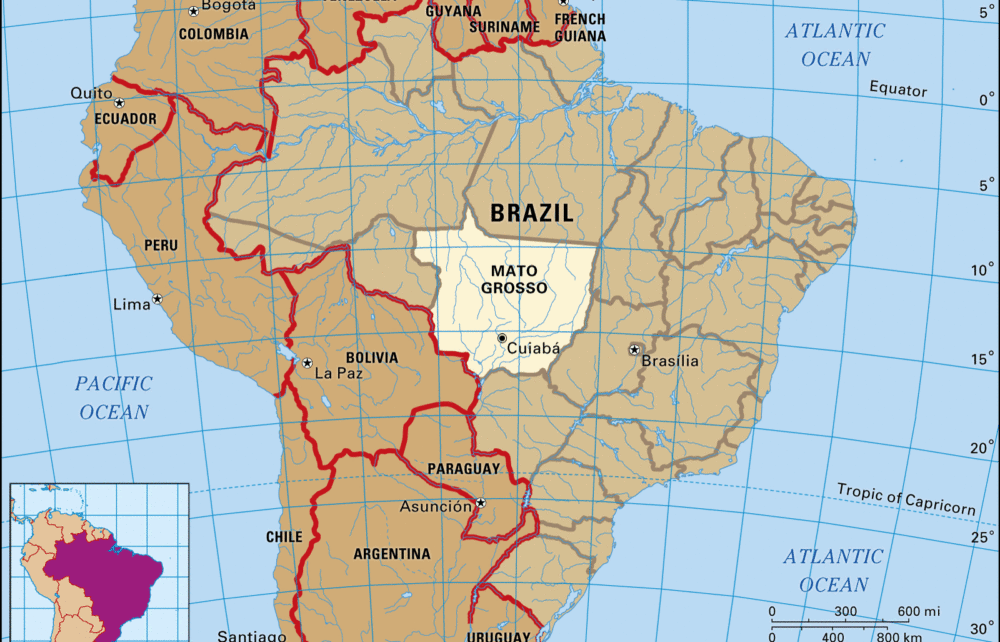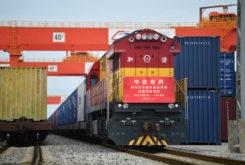The Brazilian state of Mato Grosso is revealing “a synergy between agriculture and biodiversity conservation”, in face of deforestation pressures linked to agricultural exports, while playing a dominant role in the Sino-Brazilian agricultural trade, according to a new report.
According to the report by Yan Tian Baxter, head of the foreign investment, trade and environment program at the Beijing-based Global Environmental Institute (GEI), in 2020, Mato Grosso contributed 29.27% and 15.49% of Brazil’s total soybean and beef production, respectively. More than half of these state-produced commodities were exported to China that same year. The state alone accounted for 14% of China’s soybean imports and 6.8% of beef imports in 2020. “Thus, Mato Grosso plays a dominant role in the Sino-Brazilian agricultural trade”.
The analysis found that there was a relatively low degree of habitat conversion associated with Mato Grosso soy imports in 2011. Mato Grosso´s succes involves innovations in administrative regulations, such as a jurisdictional approach — “a way of managing the landscape within clearly defined boundaries and with a high level of governmental and other stakeholder involvement and participation”.
China’s soybean imports from Brazil rise despite higher prices
Other factors have been conditional access to agricultural credit; the revitalization of conservation areas; support for local food chains and family farming. Technological advances such as the recovery of degraded lands, livestock-forest integration and the development of animal feed also play an important role. “However, law enforcement capacity still needs to be strengthened to combat illegal habitat conversion, especially in the municipalities of Paranatinga and Feliz Natal”, the author says.
Based on these findings, Baxter argues that in order to promote climate- and nature-friendly agricultural practices and reduce supply chain volatility, attention should be directed to the few high-risk areas, such as the six soy-producing municipalities in Matopiba, a region comprising the states of Maranhão, Tocantins, Piauí and Bahia.
“Chinese investors also need to focus more efforts on these few areas of risk as part of their long-term supply strategy. Deforestation linked to beef affects municipalities more intensively and requires more resources and coordination”, the author adds.
New historic record for trade between Brazil and China in 2021
The study also recommends that Chinese companies take a cautious approach when investing in agriculture and related sectors, including infrastructure in southern Brazil. As for Mato Grosso, the GEI finds engagement with local government and industry constructive and recognizes its advances, while helping it to improve its governance capacity.
A transparency initiative through data from Trase revealed, in 2020, that half of the deforestation risk related to soy and beef exported from Brazil is concentrated in just 1% and 2%, respectively, of the municipalities that produce these commodities.
GEI analyzed China´s purchase patterns in Brazil and Argentina between 2009 and 2019 and found that the habitat conversion linked to the export of soy and beef from these countries to China is also spatially concentrated. Other than Matopiba and Mato Grosso, it includes southern Brazilian states of Paraná, Santa Catarina and Rio Grande do Sul.
Brazil and China miss deadline to renew key bilateral strategic frameworks
Soybean-induced habitat conversion was marked in Matopiba. The region produced about 6.1 million tonnes of the commodity and accounted for 9% of the product’s exports to China in 2018. In the region, six municipalities had extremely high rates of agriculture-induced habitat conversion.
“The purchase of soy and beef from these municipalities leaves the consumer market adrift and exposes it to the risk of so-called ‘demand-driven environmental destruction’. China cannot just ignore these “problem” locations and buy from elsewhere”, Baxter writes. Although southern Brazil and Mato Grosso have comparatively lower degrees of habitat conversion incorporated in imports from China, they still face sustainability risks and environmental constraints.
The South is far from recent deforestation hotspots and has provided China with more than a third of Brazil’s soy imports for more than a decade. The region has only five municipalities with apparent, albeit low, levels of habitat conversion, according to the study.




